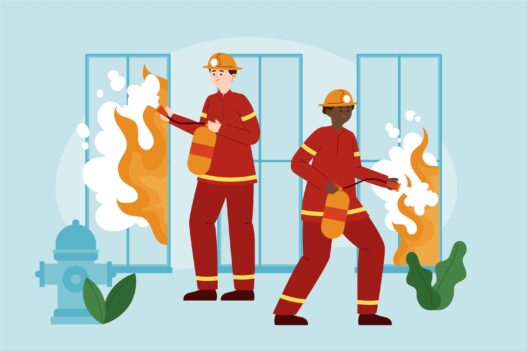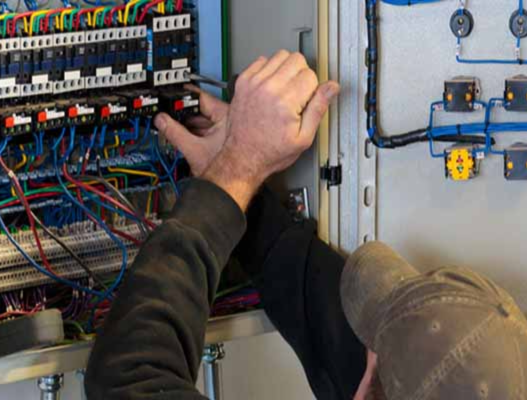Introduction
In today’s world, ensuring fire safety is paramount. Fires can cause severe damage to property, endanger lives, and disrupt operations. Conducting a fire safety risk assessment is an essential measure for safeguarding against such hazards, providing an in-depth evaluation of a building’s fire risks and implementing necessary protective actions. This comprehensive guide will walk you through each step of an effective fire risk assessment, emphasizing the importance of each stage. From identifying fire hazards to implementing safety measures and conducting regular reviews, this guide is designed to equip property managers, business owners, and safety officers with valuable insights for maintaining a fire-safe environment.
Section 1: Understanding Fire Safety Risk Assessment
A fire safety risk assessment is a structured process for identifying and evaluating potential fire hazards within a space and ensuring the appropriate preventive measures are in place. It typically involves trained professionals who systematically analyze aspects like flammable materials, ignition sources, and fire safety systems within the environment. Additionally, a fire risk assessment looks at the building layout, occupancy levels, and the nature of any stored materials, helping to create a unique safety plan that addresses each specific hazard. Therefore, understanding what a fire safety risk assessment encompasses is the first step toward implementing an effective fire safety strategy.
Section 2: The Importance of Fire Safety Risk Assessments
Fire safety risk assessments are essential not only for regulatory compliance but also for the safety of everyone who uses the building. In the unfortunate event of a fire, having a well-conducted risk assessment can mean the difference between manageable damage and severe loss. Furthermore, a fire risk assessment isn’t just a one-time activity—it is a continuous process that involves updating safety measures as hazards evolve. Not only does it contribute to legal compliance, but it also builds peace of mind, knowing that your property and the people within it are safeguarded. Emphasizing fire safety sets a proactive standard, protecting assets and, most importantly, lives.
Section 3: Identifying Fire Hazards
The first actionable step in a fire safety risk assessment is identifying potential fire hazards. These hazards generally include sources of heat (such as electrical equipment or machinery), flammable materials (like paper, wood, or certain chemicals), and the oxygen supply, which sustains the fire. To accurately assess risk, it is essential to scrutinize areas where these elements might combine to form a hazardous situation. For instance, poorly maintained wiring, crowded storage spaces, and insufficient ventilation can increase the likelihood of fire. Acknowledging each of these risks helps prevent fire incidents by facilitating informed, targeted measures to control or eliminate hazards.
Section 4: Evaluating the Risk
Once hazards are identified, the next step is evaluating the level of risk they pose. Risk evaluation involves understanding how likely each identified hazard could cause a fire and considering the potential impact on occupants, property, and business continuity. This process involves classifying risks as low, medium, or high and prioritizing mitigation strategies for those that pose the greatest danger. In addition, assessing the building’s layout and the number of occupants allows for a more precise understanding of evacuation requirements and response capabilities. Effective risk evaluation empowers safety officers to concentrate resources where they are needed most, ensuring critical hazards are addressed first.
Section 5: Implementing Preventive Measures
After identifying and evaluating fire risks, it is crucial to implement preventive measures to mitigate these risks effectively. Preventive steps may include installing fire alarms, sprinklers, extinguishers, and smoke detectors; upgrading electrical systems; and reducing combustible materials. Furthermore, organizing regular fire safety training for employees or building occupants enhances their understanding of fire prevention. By taking proactive measures, you can address potential hazards before they turn into emergencies. Preventive measures are the backbone of fire safety risk assessment, minimizing the risk of a fire occurring and ensuring that, if a fire does start, it is managed effectively.
Section 6: Preparing an Emergency Plan
A robust emergency plan is essential to effective fire safety risk assessment. This plan should outline the steps to take in the event of a fire, including evacuation routes, assembly points, and assigned responsibilities. A well-prepared emergency plan also includes instructions for using fire extinguishers and other equipment, ensuring that occupants know how to respond safely. Regular fire drills should be part of the emergency planning process, allowing occupants to practice evacuation procedures and become familiar with exit points. An emergency plan helps to reduce panic and confusion in an actual fire situation, as occupants know the safest and quickest route to safety.
Section 7: Training and Building Awareness
Training and awareness are critical to effective fire risk management. Educating staff, residents, or building occupants about fire safety protocols fosters a culture of safety and vigilance. Basic training sessions should include instructions on identifying fire hazards, recognizing the sound of fire alarms, using fire extinguishers, and evacuating the building efficiently. Awareness training extends beyond simple protocols to instill a safety-first mentality, encouraging everyone to contribute to fire prevention. By creating an informed community within the building, you enhance overall safety and ensure that occupants are better equipped to handle fire emergencies with confidence and composure.
Section 8: Regular Monitoring and Maintenance
Monitoring and maintaining fire safety equipment is an ongoing responsibility. Fire alarms, extinguishers, sprinklers, and emergency lighting should be checked regularly to ensure they are in working order. Additionally, fire exits must be kept clear of obstructions at all times, and any damage to safety equipment should be repaired immediately. Scheduled inspections and maintenance sessions help detect issues early and maintain readiness in case of a fire emergency. Regular monitoring builds reliability into your fire safety systems, giving you the assurance that these critical tools will function as expected when needed the most.
Section 9: Documentation and Record-Keeping
Keeping accurate records is a vital part of the fire safety risk assessment process. Documentation should include details of identified hazards, preventive actions taken, emergency plans, and records of training sessions and drills. These records are not only essential for regulatory compliance but also serve as a valuable resource during audits or safety reviews. Well-maintained documentation provides a transparent account of all fire safety activities, making it easy to identify areas for improvement. By reviewing past assessments and updates, safety officers can track progress and make adjustments, reinforcing the building’s fire safety measures over time.
Section 10: Reviewing and Updating the Fire Risk Assessment
The final step in a comprehensive fire safety risk assessment is regular review and updating. Fire safety is not a static field; it evolves as new hazards arise, regulations change, and buildings undergo modifications. Conducting an annual review—or more frequent updates if significant changes occur—ensures that your fire risk assessment remains current and effective. During this review, assessors should revisit each hazard, evaluate the effectiveness of existing preventive measures, and make any necessary adjustments. By updating the fire risk assessment, building managers demonstrate a commitment to continuous improvement, keeping safety at the forefront of property management.
Conclusion
Conducting a thorough and effective fire safety risk assessment is one of the best ways to ensure a safe environment for building occupants. Each step in the process, from identifying hazards to implementing preventive measures and reviewing protocols, plays an essential role in minimizing fire risks and preparing for emergencies. By following these essential steps, property managers, business owners, and safety officers can foster a proactive approach to fire safety that not only protects people and property but also demonstrates a commitment to safety excellence. Ultimately, a well-executed fire safety risk assessment is an investment in peace of mind and a testament to responsible building management.











